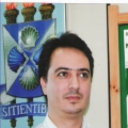Acetylcholinesterase inhibitory activities and bioguided fractionation of the Ocotea percoriacea extracts: HPLC-DAD-MS/MS characterization and molecular modeling of their alkaloids in the active fraction.
Palavras-chave
Resumo
In vitro acetylcholinesterase activities of the hexane, dichloromethane, ethyl acetate, n-butanol and aqueous extracts of leaves of Ocotea percoriacea Kosterm. (Lauraceae) were evaluated. The bioguided fractionation of the most active extract (dichloromethane) using silica gel open-column chromatography led to an active alkaloidal fraction composed of isocorydine N-oxide, isocorydine N-oxide derivative, palmatine, roemerine and roemerine N-Oxide. The identification of the chemical structure of these compounds was carried out with high-performance liquid chromatography coupled to electrospray ionization multiple-stage mass spectrometry (HPLC-ESI-MS/MS). Aiming to understand their inhibitory activities, these alkaloids were docked into a 3D model of Electrophorus electricus Acetylcholinesterase (EelAChE) built in the Modeller 9.18 employing homology modeling approach. The results suggest that the alkaloids had the same binding mode and, possibly, the inhibition mechanism of classic drugs (ex. tacrine and donepezil). The structural difference of these compounds opens a new opportunity for the optimization of leading compounds.


